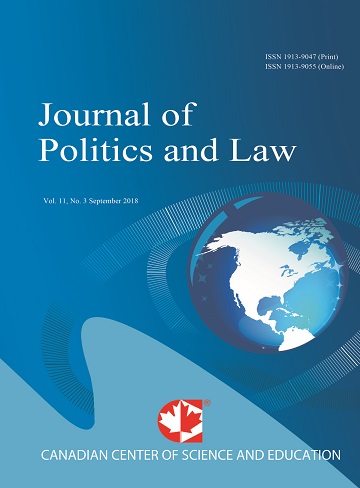The Role of Municipality in Crime Prevention
- Sara Modaberi
- Mahdi Momeni
Abstract
Environmental factors can cause criminal impetus, motivation, realization and intention and, on the other hand, they may act as a barrier against crime realization. Right architecture designing and crime prevention initiatives in the environment are a necessary solution in crime prevention. Changes in spatial structure and environmental conditions would lead into changes in criminals’ behavioral patterns. The question of this article is to clarify the role of municipality in crime prevention at urban ambiences through spatial designing. By such assumption, municipality can play a very constructive role in reducing the crimes by relying upon crime prevention strategic principles through spatial designing. Therefore, by using the principles of crime prevention theories through spatial designing, one can prevent or reduce crime and delinquency occurrence in urban environment. Thus, citizens’ security will be promoted. On this basis, the origination of many criminal acts in marginal areas should be looked for in contradictory social and economic structures and their problems. In addition to play a vital role in spatial designing, Municipality would assist and provide vulnerable classes with its services such as identifying and retaining homeless people or begs. Cultural poverty, unemployment, low self – esteem, lack of infrastructural services and absconding are, inter alia, the factors which play a vital role in leading these people toward criminal acts.- Full Text:
 PDF
PDF
- DOI:10.5539/jpl.v9n2p18
Journal Metrics
h-index (2017): 14
i10-index (2017): 39
h5-index (2017): 9
h5-median (2017): 11
Index
- Academic Journals Database
- ACNP
- ANVUR (Italian National Agency for the Evaluation of Universities and Research Institutes)
- Berkeley Library
- CNKI Scholar
- COPAC
- CrossRef
- DTU Library
- EBSCOhost
- Elektronische Zeitschriftenbibliothek (EZB)
- EuroPub Database
- Excellence in Research for Australia (ERA)
- Genamics JournalSeek
- GETIT@YALE (Yale University Library)
- Ghent University Library
- Google Scholar
- Harvard Library
- HeinOnline
- INDEX ISLAMICUS
- Infotrieve
- Jisc Library Hub Discover
- JournalGuide
- JournalTOCs
- LOCKSS
- MIAR
- Mir@bel
- NewJour
- Norwegian Centre for Research Data (NSD)
- Open J-Gate
- PKP Open Archives Harvester
- Publons
- Pubmed journal list
- RePEc
- ROAD
- Scilit
- SHERPA/RoMEO
- Standard Periodical Directory
- Stanford Libraries
- UCR Library
- Ulrich's
- UniCat
- Universe Digital Library
- UoS Library
- WorldCat
- Zeitschriften Daten Bank (ZDB)
Contact
- William TaiEditorial Assistant
- jpl@ccsenet.org
